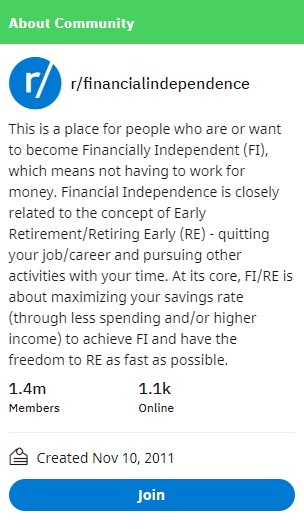This current trend could be your ticket to freedom in your 40s, or even earlier
Whether you love what you do, or simply get through the work day to make ends meet, chances are you like the sound of early retirement. Fortunately, we live in a world of resourcefulness and the Financial Independence Retire Early (FIRE) movement is no exception.
Disclaimer: This article is intended to give an overview of the ways in which the FIRE movement may appeal to individuals and is in no way intended to act as financial advice. Always seek professional advice when considering financial strategies to apply to your individual circumstances.
For many of us, working is a monumental part of who we are. It may bring us purpose and comfort knowing that our work contributes to our society in some way. However, working by choice – knowing you can quit whenever you want – is a foreign concept to most.
Perhaps you’re looking to beat the standard timeline and retire early, or maybe you like working and you’re more interested in financial independence. If this is the case, depending on your circumstances, the FIRE movement could be worthwhile considering.
That said, the path to financial freedom involves some serious frugality at an earlier time in life when many prefer to indulge, so it certainly isn’t for everyone.
What is the FIRE movement?
The Financial Independence, Retire Early (FIRE) movement is a very deliberate lifestyle choice that involves setting notable saving and investing goals – typically during a person’s 20s and 30s. Executed well, the FIRE movement can see a person achieve financial independence and the dream of retiring by their 30s or 40s – or perhaps even earlier.
The FIRE movement has gained widespread traction in recent years. It’s attracted an almost cult-like following by millennial practitioners, many of whom choose to undertake extreme measures in the name of minimising expenses and saving for their goal of financial independence. In saying that, there are also many followers in Australia who approach the FIRE movement by making moderate sacrifices to lower their living expenses.
The Australian Bureau of Statistics released research that suggests a change in work-life-balance mentality has been partially responsible for more Australians wanting to retire. Recent findings from a Labour Force survey have shown that the number of people expected to retire in the next year has increased to 159,000 compared to 110,000 immediately prior to the pandemic.
Studies as such provide valuable insights into why more Australians are aligning with the idea of early retirement. While it’s impossible to know the number of people practicing the FIRE strategy, a FIRE community Reddit page of 1.4 million members has something to say about its popularity.

Many popular Australian podcasts and social media influences in the finance space have pounced on this trend, gaining a community of FIRE followers in search of hacks to manage personal finances and make enough money to achieve the new Aussie dream: financial freedom.
How does the FIRE movement work?
The FIRE movement operates with the concept of making stern sacrifices now, in order to roll in financial freedom later (later being in the next decade or so as opposed to 40+ years down the track).
Financial Independence Retire Early often looks like working more than one job and saving or investing the vast majority of money earned from that first supermarket job, right through to your 30s.
Of course, not everyone has the same goals. The logistics of FIRE can look different for those looking to be financially independent, compared to others whose goal is early retirement.
Most FIRE followers usually aim to save 25x their annual expenses before entering retirement. Once early retirement has been achieved, they will typically then adopt the ‘4% rule’, which advises ‘safe’ rates of withdrawal from retirement savings.
So, for example, if you’ve carefully calculated that you spend $40,000 per year, you’ll need $1,000,000 to retire according to the FIRE strategy. It’s all about saving hard and fast for smooth sailing in the future. Essentially, the more frugal your lifestyle, the less money you’ll need in retirement.
When it comes to how your life could look like in early retirement, this informal movement has three broad approaches:
1. Fat FIRE
The most aggressive of the FIRE saving and investment strategies, this approach involves saving in a way that won’t require you to change the standard of living you may be used to once you retire.
The Fat Fire approach is best suited to those who may earn a higher income and are accustomed to life’s luxuries. Enjoying those luxuries well into retirement will depend on bigger savings.
There are many ways for FIRE followers to embrace that grind and save more money in their 20s and 30s. Cue safe investing. The FIRE movement is geared around playing it safe for the long-term gain of living debt free. You’re unlikely to find this community jumping on high-risk investment ventures. Rather, Fat FIRE encourages investing every possible dollar in low-cost index funds and listed investment companies. One way to do this could be to research investing in listed investment companies (LICs) and exchange-traded funds (ETFs). You should consult a professional to decide if this approach is right for your personal circumstances.
Taking calculated measures like investing in the stock market and ensuring your dividends and superannuation are working for you is seen by FIRE movement devotees as a way to ensure there are assets there to provide the support you need when enjoying financial independence and an early retirement.
2. Lean FIRE
As the name suggests, this method sees followers aim to survive on less — there’s an emphasis on survive here. Those who follow a Lean FIRE approach usually only spend around $25,000 each year.
Consequently, this more aggressive strategy is for lovers of the frugal lifestyle. Lean FIRE best suits those willing to live a minimalist lifestyle to reduce their cost of living in retirement, which could look like enjoying camping holidays rather than venturing overseas.
Another great way to utilise all that spare time could be to take up a practical hobby that could teach you how to handmake gifts for loved ones, rather than dipping into your savings each time a birthday or occasion comes around.
3. Barista FIRE
Perhaps named for its arguably more enjoyable approach, Barista FIRE sits in the middle of the other approaches where the aim is to maintain more than a minimalistic lifestyle in retirement by relying on savings as well as part-time or ad hoc work.
Having a side hustle can be a strategic way to make more money. This simply means doing other work for money alongside your primary source of income. Some FIRE practitioners have even been known to get a second job as an Uber driver to earn money outside of their full-time job.
There are more and more ways to make money at our fingertips in today’s increasingly connected online world, see: Discover 28 of the best online money-making opportunities in Australia. An online side hustle can even be a method to earn passive income while in retirement, perhaps allowing for a few luxuries.
This more flexible strategy could even see FIRE followers undertake some work to enjoy a coffee or two while still mindfully monitoring their spending habits. If you’re someone who is happy to go without most luxuries, such as expensive clothes, but still enjoys working and having lunch with friends every now and then, Barista FIRE could be the approach for you.

Now that we’ve given an overview of what the FIRE movement is and how it works, it’s time to delve into how it could serve you.
Five reasons why the FIRE movement is worth considering
1. Enjoy a simple lifestyle
Simplicity or sacrifice? This is the part that you’ll either love or hate. For some, the idea of living without regular holidays, expensive clothes, daily takeaway coffees and weekly dining experiences can sound uninspiring. Whether or not it’s a glass-half-full (or empty) situation could depend on your perspective.
As the popular saying goes: the best things in life are free. You may be surprised at how you can live your best life while saving. Partaking in the FIRE movement requires a saving strategy that sees followers sacrifice a typical millennial lifestyle. However, FIRE communicates the notion that followers could live their best life with early retirement, rather than waiting for their mid-to-late 60s, which may come with some adventuring limitations.
As we covered with FIRE’s broad approaches, the simplicity continues once financial independence and early retirement have been achieved. By committing to living simply, many FIRE followers have reported great satisfaction in getting the most out of life with modest experiences, rather than accumulating material possessions and wealth.
An upside of the paired back saving phase is that we live in a world of savvy hacks. Perhaps you’re someone who wants to knuckle down and save for early retirement, but loves clothes too much. Maybe you’re a points-crazy jet-setter and self-confessed foodie who gets invaluable joy out of travel and amazing meals.
That’s okay, living simply doesn’t necessarily mean giving up life’s little luxuries all together. While it certainly can, it doesn’t have to.
There are countless hacks to spend less and consequently, save more. From meal prep to supermarket savings and pre-loved clothing, The Champagne Mile has dedicated FIRE followers covered with the 20 best frugal living tips to save money.
If this simplicity/sacrifice trade-off doesn’t sound like too much for you, then you could be someone who revels in the simple FIRE life.
2. More time to enjoy life
Theoretically, retiring early with the FIRE movement could mean you have more time to enjoy a low-stress life with loved ones. A financially-independent lifestyle can offer more time to be present and do the things that truly bring you joy.
This is a personal consideration that boils down to your personal values and belief system. Many people who chose to adopt the FIRE movement value time over money. The FIRE movement poses the question: do you want your money or your life?
If you’re someone who wants to spend their time working, then perhaps there isn’t much point in living frugally and making sacrifices in your 20s and 30s. On the other hand, if you think you’re more inclined to spare yourself decades of working an office desk job, having more time could be a major reason you partake in the FIRE movement. Perhaps there’s a hobby you’d much rather pursue rather than work, in which case the idea of more free time could seem quite compelling.
At the end of the day, FIRE means something different to everyone. It’s important to have a clear picture of your values and use them to shape what you want your retirement to look like. It may be possible to have free time replace a 9-5, but that will mean your FIRE strategy will look different to someone who still plans to undertake some work during retirement.
These considerations could help individuals decide which FIRE approach could see them achieve their free time goals. Either way, another one of the FIRE movement’s major drawcards is winding up with a whole lot more leisure time in your 30s and 40s.
3. Live free (debt free)
Many underestimate the psychological strain that debt can cause. Paying debt off usually requires a steady income, which can feel like a lot of pressure for someone who isn’t in the best circumstances to be working. For example, the pressure to pay off debts can mean going back to work sooner than you’d like after welcoming a new addition to the family.
For most of us, getting a mortgage and working full-time to pay it off for the majority of our adult lives is the norm. It’s likely what your parents and grandparents did to give you the life you have now. The FIRE community is actively challenging this status quo by seeking to demonstrate that aggressive saving can make it possible to retire long before the age of 65.

4. Gain control over your finances
The finance space can be riddled with unknowns. Though there are likely always going to be cycles of growth and loss, economic and financial downturns may unexpectedly impact investments. This can be nerve-racking for someone who likes to maintain total control of situations.
The FIRE movement focuses on one simple financial element you can almost always control: spending. Having greater control over your finances when partaking in the FIRE movement can feel empowering.
Overspending with credit cards can be an easy trap to fall into. At its core, the FIRE movement aims to eliminate these kinds of spending behaviours through a series of principles that rely on discipline and planning.
Closely monitoring where every cent goes is one of the main methods that FIRE employs to ensure adherents hopefully never have to go into debt.
Feeling completely in control of your finances is a foreign concept to many in today’s consumer society. We are sent seemingly endless messages that sell us products we are led to believe we need to be happy. And it’s often all to spiral out of control in an online buying frenzy, only to later ask ourselves: ‘did I really need that?’ FIRE requires a strict saving regime that, employed diligently, could see you say goodbye to wasting money.
Becoming a saving whizz is easier when there’s a meaningful goal to aspire to. If that goal is financial independence, then closely tracking all of your pennies could see you have empowering control over your finances. This could mean peace of mind, which many people in the FIRE community would argue is worth more than accumulating wealth into their 60s.
5. Feel motivated to work now (and rest later)
There are few things better than waking up with a spring in your step, feeling as though there’s something to get out of bed for and work towards. Retirement and superannuation are rarely topics at the forefront of millennial minds, but having a vivid dream for early retirement in the near future can be motivating.
Think of it this way: the promise of a weekend is usually enough motivation to get us through the second half of a Friday in the office — knock-off drinks and two days of couch time just hours away. The FIRE movement motivates you to kick into work gear now by proposing financial freedom for the rest of your life.

Simply put, more money in the bank now can translate to financial independence sooner. Consequently, part of the FIRE movement is finding innovative ways to boost your income now. Seeing as one person can only work so much, this can involve getting inventive with multiple income streams.
If you’re feeling motivated at the thought of earning more money now to rest later, then the FIRE movement could be for you.
Five practical tips for living the FIRE movement
When it comes to living a frugal lifestyle, it’s all about the tips and tricks that help the modern saver put away their pennies and still enjoy life while doing so. Here are five of our favourite savvy saving hacks:
1. Get rid of your car and Uber instead
Owning a car can be an endless money pit. Running costs are an infinite drain on finances that could become savings. Just thinking about ongoing registration, insurance, fuel, servicing, and toll costs is enough to make almost anyone want to say goodbye to their vehicle. If you reside in an urban area where you can bike, catch public transport or Uber with ease then getting rid of your car could bring astronomical savings.
2. Purchase through cashback sites
Living frugally isn’t about not spending at all, but rather, extracting the most savings you can. Cashback sites receive a commission on purchases made through a link, allowing shoppers to earn cash by shopping online from the comfort of their own homes. Cashrewards – Australia’s leading cashback site – partners with over 1,200 popular brands which means the weekly grocery shop, a mobile phone plan, or electricity bill could be making you money. Alternatively, consider Cashrewards’ competitor – Shopback.
3. Jump on the meal prep trend
Failing to prepare is preparing to fail when it comes to saving on daily food splurges. Think about this, a daily coffee usually costs around $5, while a quick duck-out-the-office for a $12 lunch is pretty standard. By that logic bringing your own lunch (and investing in a coffee machine) could save you upwards of $4,000 a year! We suggest setting aside some Sunday kitchen time with your family to transform meal prepping into a fun and meaningful ritual. For inspiration simply turn to one of the many meal prep bloggers online who often provide recipes and shopping lists for your weekly meals.
4. Embrace the capsule wardrobe
Behold the power of a humble white linen shirt. Much like the FIRE movement, the capsule idea is one of those concepts that is great in theory, but challenging to apply in reality. However, the challenge of condensing your wardrobe down to a handful of staple pieces that can create versatile outfits is a great way to get to know your personal style while embracing minimalism. Your pile of unwanted clothes could even make you money! Check out The Champagne Mile’s guide on where to sell used clothes in Australia.
5. Change the way you travel
The thought of missing out on travel in your 20s and 30s is enough to turn a lot of people away from the FIRE movement, especially when social media feeds are flooded with friends soaking up a European summer. The amazing thing about travelling in pursuit of nature is that it doesn’t have to cost the bank. Luckily, we live in a country abundant with diverse natural landscapes. Enter road trips, camping and national parks. Did you know you can rent a campervan for as little as $1 in Australia? Find out more about Australia’s ridiculously affordable road trips here.

So, what’s the catch with FIRE?
Great sacrifices often come with greater rewards. However, if you’re thinking about adopting a FIRE lifestyle, you should also consider thinking about whether the sacrifices are going to negatively impact the way you live your life.
Potentially isolating
This extreme saving journey isn’t without its fair share of limitations. Though the premise of financial independence and early retirement sounds appealing, some who have attempted the FIRE strategy admitted to finding themselves dissatisfied and ultimately miserable.
From an emotional standpoint, aggressive saving can often mean missing out. Unless your friends are also firmly onboard with the movement, you may feel isolated as a result of living the FIRE lifestyle. The frugal nature of this strategy could mean alienating yourself from friends and family members who adopt traditionally more materialistic choices.
Risk of failure
Any wise financial investment, no matter how safe, runs the risk of failure and disappointment. There is always going to be some risk element involved in investing a growing sum of savings in the hope that the market performs in a way that will sustain the next 40 to 50 years of retirement.
It’s important to seek financial advice when determining whether the FIRE movement is for you. Remember that the FIRE movement is a trend and always work with a financial advisor to understand what best suits your financial situation.
Conclusion: Is FIRE for you?
The FIRE movement has caught on as what appears to be a simple, smart and effective strategy. How better to save money than by simply not spending in the first place?
The appeal is evident. Working by choice or not working at all while being financially independent and still young is a lot to look forward to. The journey there may not be as mapped out as the traditional work-for-forty-years-to-pay-off-a-mortgage route, but more and more young Australians are committing to living frugally now for freedom in the near future.
Whether or not you view the concept of financial independence, retiring early, or entering semi-retirement younger than most as worth the effort and frugal sacrifices, adopting some of the FIRE principles in your financial strategy could be worthwhile. Employing even part of a FIRE mindset could see you work for a few less years or experience less financial strain.
Disclaimer: This article is intended to give an overview of the ways in which the FIRE movement may appeal to the individual and is in no way intended to act as financial advice. Always seek professional advice when considering financial strategies.
FAQ – FIRE
How much money do you need to earn for FIRE?
This depends on how you want to live in retirement. Those who prefer not to work in retirement at all and live a less minimalistic lifestyle will save up to 70% of their annual income. Most FIRE followers usually aim to save 25x their annual expenses.
What is the 4% rule?
This is one of the general rules in the FIRE movement, which suggests that people can ‘safely’ take 4% out of their savings every year once they have entered retirement. This rule of thumb is more of a guideline rather than a hard rule for retirement income, as there are many factors to take into consideration, such as inflation.
Who invented the FIRE movement?
The FIRE movement has taken off in the past few years, its roots have been traced back to Vicki Robin and Joe Dominguez who wrote the book Your Money or Your Life in the early 90s.
While you’re here: Subscribe to our newsletter for the latest tips, deals and news. It only takes a few seconds and we respect your privacy:




